Commodity Boards Make a Splash in 2023
December 21, 2022 | 16 min to read
Historically, mom-and-pop farms were unable to effectively market their produce until federal and state organizations formed promotional groups like the Pear Bureau Northwest in 1931. Today, the USDA oversees various marketing programs, showcasing initiatives from organizations like the American Pecan Promotion Board and the California Avocado Commission. Each group focuses on targeted marketing strategies, utilizing digital platforms to engage consumers and boost sales, significantly increasing per capita consumption of their products over time.
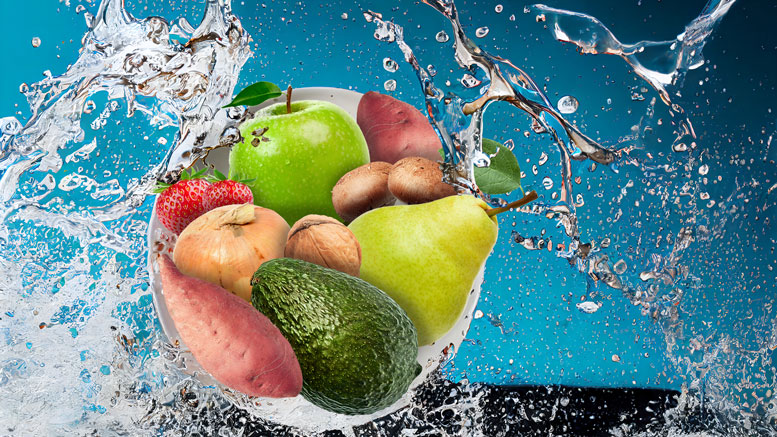
Originally printed in the December 2022 issue of Produce Business.
Mom-and-pop farms dominated the American landscape a century ago. Even with the whole family helping, these small-scale operators scattered across the country didn’t come near amassing the dollars necessary to market their fruits, vegetables and nuts nationwide.
To help market these crops, federal and state governments stepped in to organize farmers into promotional groups. The Pear Bureau Northwest was one of the first, with its federal marketing order founded in 1931. Today, the U.S. Department of Agriculture’s (USDA) Agricultural Marketing Service (AMS) oversees 28 marketing orders and 22 research and promotion programs, of which fresh produce and nuts figure prominently. Other boards have organized by state, region, or other commodity.
Here is a preview of marketing and promotional plans for 10 U.S. organizations (listed alphabetically) in 2023:
1. American Pecan Promotion Board (APPB)
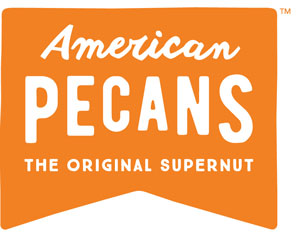
Fort Worth, TX
eatpecans.com
Funding: The board is funded by a $0.02 per in-shell pound assessment paid on domestically produced pecans as well as pecans imported into the U.S.
2023 Promotion and Marketing Budget: The APPB’s marketing budget is roughly $6 million.
Focus: Marketing is consumer focused.
2023 Promotion and Marketing Goals and Strategies: The APPB uses social media to reach consumers, rather than work directly with retailers or foodservice. “We’ve been consistent with how we deploy our social efforts through the more popular social channels (Instagram, TikTok, Pinterest, reels, OTT, etc.),” says Jeff Smutny, director of marketing and regulatory affairs.
Sales/Consumption: The board utilizes IRI data to track its efforts, along with analytics from each social media channel it uses. Overall, per capita availability of pecans in the U.S. consumption increased slightly from 0.50 pounds in 2008 to 0.54 pounds in 2018, according to USDA ERS data last updated Jan. 5, 2021.
2. California Avocado Commission (CAC)
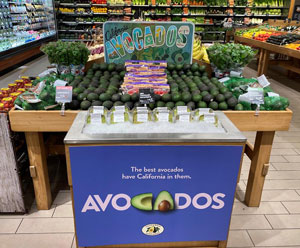
Irvine, CA
californiaavocado.com
Funding: The CAC is funded through two grower assessment programs. The principal program is a percent of dollar sales assessment on commercial California growers of all varieties of avocados. The second program is under the auspices of the Hass Avocado Board (HAB) and is a per-pound assessment on the sale of Hass avocados in the U.S.
2023 Promotion and Marketing Budget: The 2023 budget is in review by the CAC’s board of directors, but it is anticipated to be approximately $8.6 million.
Focus: The CAC’s marketing targets consumers, retailers, and foodservice operators in the western U.S. and select customers in other regions. Export sales are pursued opportunistically, and in the past few years have focused on South Korea, Japan and China.
2023 Promotion and Marketing Goals and Strategies: The CAC’s overarching consumer advertising campaign, ’The best avocados have California in them’ will continue in 2023. This well-received campaign plays on the “CA” in the word avocados. Advertising and other marketing communications publicize the California avocado season and emphasize the California origin.
Sales/Consumption: The fruits of the CAC’s, and other avocado boards’, labors, is demonstrated in the jaw-dropping increase of U.S. per capita consumption from 4 pounds in 2010 to 9.05 pounds in 2020, according to USDA ERS data released October 2021. In California, where the CAC’s retail and foodservice marketing and promotional activities are concentrated, per capita consumption is estimated at more than double the national average, according to Jan DeLyser, vice president of marketing.
3. California Strawberry Commission (CSC)

Watsonville, CA
www.californiastrawberries.com
Funding: Dollars come via an industry assessment per tray of strawberries shipped or sold into the market. Half of the assessment is paid by the farmer and half by the shipper or processor (handler).
2023 Promotion and Marketing Budget: Budgets are established annually by the CSC’s board of directors each January. Typically, marketing and communications programs range from 25% to 30% of the annual budget; in 2022, this amount was just over $2 million.
Focus: The CSC focuses on communications, outreach and engagement with U.S. and Canadian retailers to provide crop forecast and market insight data to guide their strawberry procurement and promotion planning. The commission also conducts consumer digital promotional programs in Canada to increase awareness during the state’s peak season, and trade-focused education and promotion programs in Mexico. These are the two most important export markets for California strawberries.
2023 Promotion and Marketing Goals and Strategies: The CAC’s marketing goal is to create an emotional connection between consumers and California strawberry farmers, according to Chris Christian, senior vice president. An example from 2022 is the commission’s successful digital promotion partnerships with major retailers. “These keep strawberries on the shopping lists of their shoppers and engage new shoppers with the category. We have also conducted successful national shopper rewards activations with Ibotta, a leading rewards platform,” says Christian.
Sales/Consumption: Strawberries are America’s favorite fruit, based on CSC third-party attitudes and usage survey data. “The collective efforts of the CSC and the brand marketers in our industry have driven significant increases in retail sales and consumption of strawberries over the years,” says Christian.
According to IRI/Freshlook data for the 52 weeks ending Dec. 26, 2021, strawberries ranked No. 5 of the top 10 fruit and vegetable sales in the U.S. Per capita consumption of fresh strawberries in the U.S. has increased from 7.23 pounds in 2010 to 8.5 pounds in 2020, according to USDA ERS data released September 2021.
4. California Walnut Board (CWB)

Folsom, CA
www.walnuts.org
Funding: The CWB is funded through handler (processor) assessments. The assessment rate for 2020/21 and subsequent marketing years is $0.025 per kernel weight pound of assessable walnuts handled.
Focus: The CWB’s efforts to reach retailers and foodservice operators take place both domestically as well as internationally. The board runs marketing programs in Spain, Germany, the UK, India, Turkey, MENA (Middle East/North Africa), Japan, South Korea, and Canada.
2023 Promotion and Marketing Goals and Strategies: On the retail side, the CWB’s core focus will be expanding walnuts’ presence in produce in 2023. “We believe that there’s a significant opportunity to expand the distribution of walnuts in produce, better aligning with their widely known health benefits. We’ll work with retailers to design programs that can unlock the potential for meaningful sales in this section of the store beyond the core holiday season. We’ve seen tremendous success in partnering with other produce items to provide simple usage solutions for the shopper,” says Jennifer Olmstead, senior director of U.S. marketing and communications.
In foodservice, the board will leverage consumers’ desire to eat a more plant-forward diet by further developing walnuts as a meat alternative. “We are in the process of re-engaging foodservice operators, but we will be a prominent presence at the Culinary Institute of America’s 2023 Global Plant Forward Culinary Summit in April,” tells Jennifer Williams, marketing director, U.S. branding and food innovation.
Sales/Consumption: Cross-promotions with other produce items (such as apples, blueberries, dates, and salad mix) have resulted in year-over-year volume lifts ranging from double digits to over 1,000%, according to Olmstead. Nationwide, per capita availability of walnuts in the U.S. increased from 0.48 pounds in 2008 to 0.54 pounds in 2018, according to USDA ERS data last updated Jan. 5, 2021.
5. Hass Avocado Board (HAB)

Mission Viejo, CA
hassavocadoboard.com
Funding: HAB collects a mandatory assessment of $0.025 per pound from domestic producers and importers. Fifteen percent of the money collected is allocated to HAB. The remaining 85% of the funds are rebated to certified member organizations that represent different producing regions. Organically grown avocados are exempt.
2023 Promotion and Marketing Budget: HAB spends $11.25 million on promotion, research and information programs. More specifically, about $3 million is spent annually on marketing and communications.
Focus: The board focuses on growing the U.S. Hass avocado market through its nutrition research and communications programs.
2023 Promotion and Marketing Goals and Strategies: HAB uses a variety of public relations and advertising tactics to promote its resources, research, and recipes to health professionals and consumers, says Gina Widjaja, director of marketing and communications. “Public relations tactics include working with influencers, Registered Dietitian ambassadors, health organizations, and the media, among many others. We also have robust digital marketing efforts that include email marketing, SEO, SEM and social media advertising.”
Sales/Consumption: Since HAB was established in 2002, the total avocado market in the U.S. has boomed from $1.3 billion in 2003 to more than $7 billion in 2021, according to the organization. Per capita consumption of avocados in the U.S. has grown some 126%, from 4 pounds in 2010 to 9.05 pounds in 2020, according to USDA ERS data released in October 2021.
6. National Watermelon Promotion Board (NWPB)

Orlando, FL
www.watermelon.org
Funding: To fund activities, watermelon producers and handlers each pay $0.03 per hundredweight (cwt) on domestic watermelons, and importers pay $0.06 per cwt.
2023 Promotion and Marketing Budget: The NWPB fiscal year runs from April 1 to March 31, therefore the 2023/2024 fiscal year budget isn’t finalized. However, for 2022/23, expenditures included $1,038,393 for marketing, $1,041,186 for communications, and $572,203 for foodservice.
Focus: U.S. consumers, retailers, and foodservice audiences are the board’s prime focus, but there is a Market Assess Program (MAP) in place reaching Canada and Japan.
2023 Promotion and Marketing Goals and Strategies: Efforts will continue to be directed at the consumer, retailers and foodservice.
Communications/Consumer: “The NWPB will encourage, amplify and engage in the happiness and healthiness space throughout 2023 by promoting watermelon as a solution to consumers with health, value and versatility ideas,” says Stephanie Barlow, senior director of communications.
Collaborating with influencers in the culinary, Registered Dietitian, and lifestyle spaces will amplify the reach of watermelon education and information through TikTok, Facebook and Instagram, and blog audiences of watermelon partners in 2023, Barlow adds, including Final Four NASCAR Champion Ross Chastain.
Retail: The NWPB’s latest consumer research suggests that shoppers predominantly use their mobile devices to keep grocery lists, get coupons and find recipes. “While still in the planning stages, NWPB continues prospecting digital avenues to the program to reach the consumer within their path to purchase and plans to continue running the annual watermelon retail merchandising contest,” says Juliemar Rosado, director of retail and international marketing.
Foodservice: Current use of watermelon on menus has increased significantly, with 71% of foodservice noting an increase in watermelon use in the past year and 78% of foodservice is extremely/very likely to keep menuing watermelon, according to the NWPB.
Megan McKenna, senior director of marketing and foodservice, adds beverages are an entry point for watermelon purchase in foodservice, and the board will target chain beverage executives. “The board will continue to educate about key issues deterring watermelon usage such as handling, shelf life, and waste, and inspire with global flavors and health, including the expansion of watermelon’s hydration message to include the benefits for the body when it is appropriately hydrated. All these findings will build the messaging for 2023 with foodservice media, at events, and direct to operators.”
Sales/Consumption: The NWPB’s 2017 Econometric Evaluation showed the estimated ROI from the board’s activities was 32.08:1. In other words, each dollar invested in NWPB promotion returned $32.08 in net farm revenue to the U.S. watermelon industry. The next Economic Evaluation report will be released in 2023. Overall, per capita consumption of watermelon in the U.S. has decreased from 15.7 pounds in 2010 to 14.3 pounds in 2020, albeit with a spike to 16.54 pounds in 2016, according to 2021 USDA ERS data.
7. New York Apple Association (NYAA)
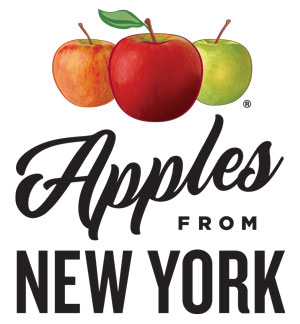
Victor, NY
www.applesfromny.com
Funding: The state’s growers are assessed each season
2023 Promotion and Marketing Budget: The current budget is approximately $2.5 million.
Focus: Domestic retailers, foodservice distributors and operators, and international as well with export markets including Israel, the Dominican Republic, Central America, Vietnam, and Singapore.
2023 Promotion and Marketing Goals and Strategies: Driving consumer traffic to retail stores where shoppers can find New York apples with geotargeted brand awareness tactics via social media is one of the NYAA’s top objectives for 2023. This follows the 2022 completion of a qualitative study through a third-party partnership, which included top produce executives at the retail outlets that drive approximately 75% of total U.S. food sales. The goal of the study was to understand retailer perceptions of the New York apple industry and identify market opportunities for New York apples.
“We are taking brand awareness to a whole new level,” says Cynthia Haskins, president, and chief executive officer. “Our target audience is consumers within driving distance of retail stores where New York apples are amply displayed. Markets are selected with input from our New York shippers. We also make available easy-to-assemble high-graphic display shippers, signage, digital coupons, and customized promotions.”
Sales/Consumption: Social media analytics, variety shipment, and sales data, when available, are used to determine the NYAA’s successes and identify areas in need of improvement within a specific market. In general, per capita consumption of fresh apples in the U.S. has increased only slightly, from 15.3 pounds in 2010/11 to 16.2 pounds in 2020/21, according to USDA ERS data released in October 2021.
8. North Carolina Sweetpotato Commission (NCSC)
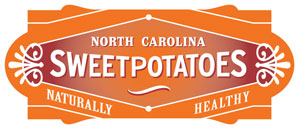
Benson, NC
ncsweetpotatoes.com
Funding: Assessments to North Carolina producers are based on annual certified acreage, for those growing more than 1 acre of sweetpotatoes.
2023 Promotion and Marketing Budget: Promotion and marketing dollars average 60% to 65% of the state’s total sweetpotatoes acreage assessment fee, or over $500,000.
Focus: The NCSC works within the U.S. in consumer, retail, and foodservice marketing, plus in some of the 34 countries to which the state exports sweetpotatoes. The top four international buyers are the UK, the Netherlands, Canada and Belgium.
2023 Promotion and Marketing Goals and Strategies: Advances in production and storage mean North Carolina sweetpotatoes have been a year-round crop for the past two-plus decades and marketing takes place 12 months as well. For February’s National Sweetpotato Month in 2023, the NCSC will target increased consumer awareness via a large online public petition campaign to have everything from dictionaries to the AP style guide and Google formally accept sweetpotatoes — one word rather than two — as the correct spelling.
“We hope retailers will join us in what we hope will be a fun consumer education effort that will also drive year-round sales and usages for sweetpotatoes,” says Michelle Grainger, executive director.
Working through regional and national distributors, via social media and retail shopping platforms like Instacart are ways the commission plans to get the word out.
This fall, the NCSC hosted eight Registered Dietitians, some representing retailers, others representing different consumer segments, but all published writers, on a trip to learn about sweetpotatoes. Grainger expects works from this trip to appear by the spring of 2023.
In addition, the board is collaborating with Westminster Kingsway College in the UK, where culinary students will participate in a recipe contest featuring sweetpotatoes. Winners will be announced in March 2023.
Sales/Consumption: Per capita consumption was 4.2 pounds in 2000. More recently, per capita consumption in the U.S. moved from 7.1 pounds in 2011 to 6.3 pounds in 2021, albeit with a high of 8.0 pounds in 2017, according to USDA ERS data released in April 2022.
9. Pear Bureau Northwest (PBN)

Milwaukie, OR
usapears.org
Funding: Assessments of $0.468 per 44-pound box of fresh pears are collected from growers.
2023 Promotion and Marketing Budget: Nearly $4 million total. The export budget is $1 million, and the assistance of the USDA’s market access grants provide on average $3 million.
Focus: PBN conducts promotion and marketing globally. The domestic market consumes about 68% of the crop annually. Regional marketing managers call on U.S. retailers annually, beginning with a custom category review before the season starts. They also bring ideas and solutions to help build their pear category. Major export markets in recent years have been Mexico followed by Canada.
2023 Promotion and Marketing Goals and Strategies: Many of PBN’s newer programs are geared around online shopping, with consumer advertising through social media platforms. “Our heavy pear consumers skew younger, with the highest percentage of the heaviest pear consumers in the 25-to-36 age group, many of whom shop online and are very active on social media,” says Kevin Moffitt, the PBN’s president and chief executive officer.
The PBN has been and is active with banners, brand pages, recipe videos, and partnering last season with well-known brands such as Dole and Pillsbury. Additionally, many of the over 400 recipes on the PBN website (usapears.org) are shoppable, meaning consumers can get all the ingredients delivered to their door from their preferred retailer at the touch of a couple of buttons on the PBN site.
“Another way we are attracting attention to pears is through a new Augmented Reality (AR) experience where consumers can see virtual pears floating in front of their eyes on their smartphone before dropping into different recipes, making everyday dishes more delicious with pears,” says Moffitt. “We also work with influencers such as supermarket Retail Dietitians, and social media cooking influencers. Most recently, we are working with TikTok influencers, as this platform is the fastest growing of the major social media platforms.”
Sales/Consumption: Household penetration in the U.S. is 35% to 40%, with room to grow, according to Moffitt. Overall, per capita U.S. consumption of fresh pears has stayed the same, from 2.91 pounds in 2010 to 2.92 pounds in 2020, according to USDA ERS data released October 2021.
10. Vidalia Onion Committee (VOC)

Vidalia, GA
www.vidaliaonion.org
Funding: Monies come from Vidalia onion growers, who pay $0.13 per 40-pound box.
2023 Promotion and Marketing Budget: Not finalized yet for 2023, however, it is estimated at around $650,000, based on an average annual crop size of 5 million 40-pound boxes.
Focus: While Vidalia onions are available in most of Canada, the VOC’s focus is mainly on domestic efforts, including awareness, sales, and research.
2023 Promotion and Marketing Goals and Strategies: The VOC has three key goals for 2023. One is to continue partnering with like-minded brands, but with a fresh perspective from previous years, according to Cliff Riner, VOC chairman, and research and development manager at G&R Farms, in Glennville, GA.
“We want to reach consumers where they’re at — in their kitchens hosting loved ones and making delicious recipes. We focus on reaching families nationwide and tying in our programs to timely moments throughout the year.”
Riner says there is also a plan to grow the committee’s digital presence on its social media channels. “We’re strategically thinking about how to reach a younger audience — including Gen Z — and know they’re on a variety of social platforms, which we’re aiming to take more part in. This would include content we create, user-generated content, and influencer partnerships as well,” says Riner.
A third goal is to explore how to grow the understanding of what it takes to grow a Vidalia onion. “We will add an in-person element to give this broader understanding and a bigger picture of why to choose Vidalia onions,” he says.
Sales/Consumption: The VOC is currently looking at the 2022 season’s sales and analyzing data. However, Vidalia onion sales, according to data provided by the VOC, outpaced overall onion sales, increasing in both dollars (+13.7%) and units (+11.7%), thus underscoring the committee’s activities’ direct impact.
2 of 17 article in Produce Business December 2022

